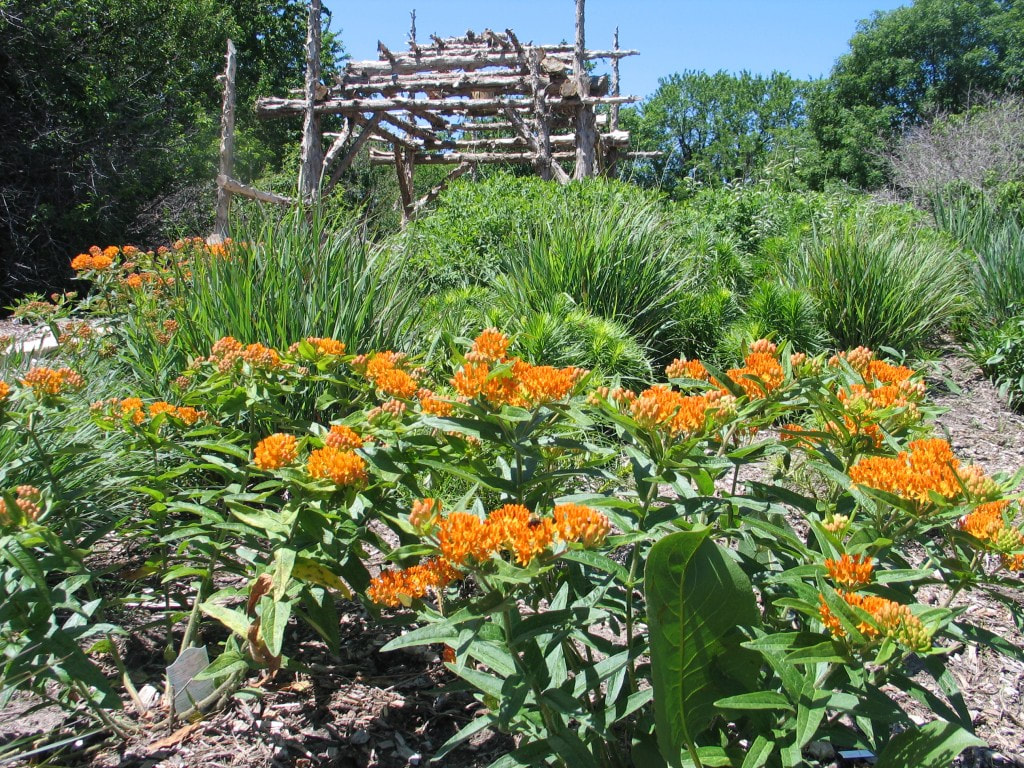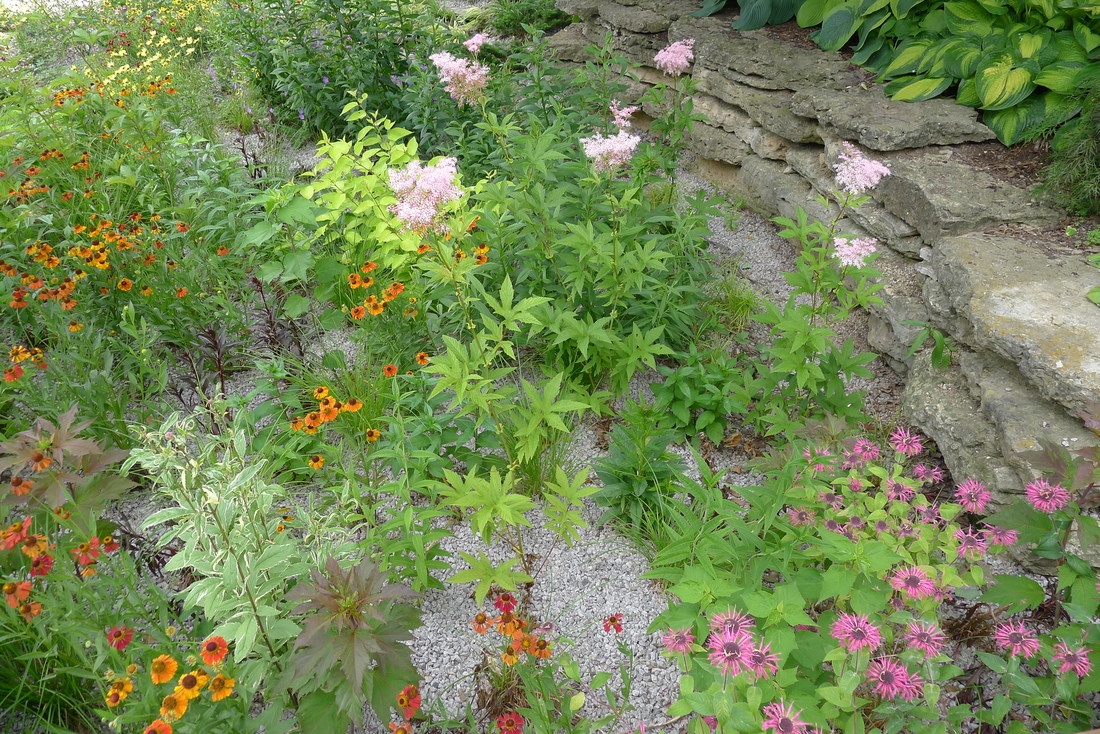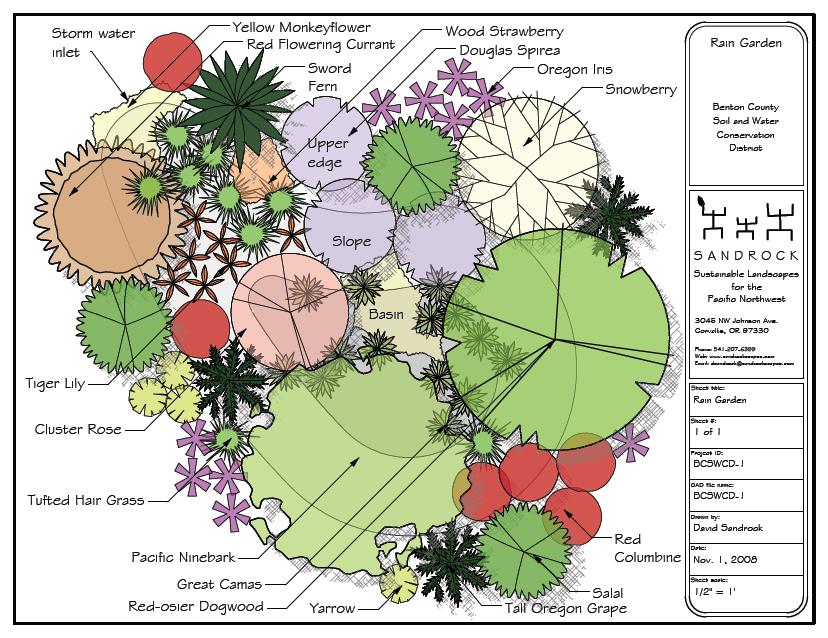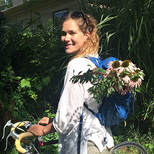|
Native plants are a hot topic right now but why do some people like them while others do not? What exactly are native plants and what roles do they play? I will explore these questions so that you can walk away with an educated view of what you want to put into your garden or landscape. What is a Native Plant?According to the USDA a native plant is, "a plant that is a part of the balance of nature that has developed over hundreds or thousands of years in a particular region or ecosystem". Doug Tallamy and Rick Darke define a native plant in their book The Living Landscape as: “a plant or animal that has evolved in a given place over a period of time sufficient to develop complex and essential relationships with the physical environment and other organisms in a given ecological community.” Basically these plants have been around for hundreds of years, creating a specialized niche in the food chain while creating evolutionary relationship with the plants and animals around it! Native vs Ornamental plantsMost of the plants available in nurseries are not native, but exotic ornamental varieties that have evolved in other parts of the world. When you put these plants in your garden most native bugs cannot feed on them. Many people actually like ornamental plants because most bugs won't feed on them. However, what implications does this have for the community of insects and birds that rely on plants as a food source? According to Douglas Tallamy, expert on plant-insect relationships, a large majority of insects can reproduce only on plants they have an evolutionary history with — such as monarch butterflies and species of milkweed. What is the difference between host plants and nectar plants?It is important to know the difference between nectar and host plants when you are shopping for native plants so that you have a mixture of both in your garden. Did you know that some insects will lay their eggs only on specific plants? The Monarch is a great example of this! Flowers that are rich in nectar may attract adult butterflies but that doesn't mean the butterflies will stick around once they are done feeding. They will still be searching for a plant to lay their eggs on. By planting host plants, you will ensure that when the butterflies arrive they will stick around to lay eggs on your plants! If you are wondering if a plant is a host of nectar source, simply do a google search to find out. For instance, if you want to attract Monarchs, plant species of milkweed as a it is their only host plant. They also enjoy feeding on asters, sedum and verbena! How do I know what plants are native to my area?I’m glad you asked! Native Plant Finder is a wonderful tool developed by Douglas Tallamy, renowned expert in the science of plant-insect interactions, to help you find the best species to attract pollinators and birds in your area. It is currently in the beta stage because it is a steady work-in-progress. It is simple to use and you can type in your zip code to get a specific list of pollinators species in your area. Another great resource is your local extension office. They will provide you with many resources specific to your area. You can also call around to your local plant nurseries to ask what they have in stock for native plants. If they don't have any, make sure to request that they order some in. Also, ask if the plants have been treated with any systemic pesticides, like neonicotinoids, which can kill an insect that feeds on it. Simply walking around undisturbed habitats like parks are another great way to observe what plants are growing naturally. 5 Reasons To Love Native PlantsThey are low maintenance once established. They are every bit as beautiful as exotic flowers. They provide a healthy space for people, especially kids. They don't need any fertilizers or pesticides to grow. Many lawns are covered with herbicides and pesticides that may contain neonicitinoids and are potentially dangerous to kids and adults alike. They help to conserve water and lower ground temperatures. Native plants are adapted to local environmental conditions so they do not need water, other than rainfall, once established. They help to support wildlife such as insects, butterflies and birds! SourcesThe Audubon Society- https://www.audubon.org/content/why-native-plants-matter
Monarch Gardens LLC- https://www.monarchgard.com/articles.html Tallamy, Doug. Bringing Nature Home. 2007. http://www.bringingnaturehome.net/ Tallamy, Doug and Darke, Dick. The Living Landscape.
6 Comments
A rain garden is a garden of native plants that are planted in a small depression or slope. It is designed to temporarily hold and soak in rain water runoff that flows from roofs, driveways, patios or lawns. What are rain gardens supposed to do?During a rain storm, rain water will gush out of the gutters and downspouts, across lawns that have been treated with fertilizers and into a storm drain that then dumps it into local rivers and lakes. Rain gardens capture and filter this rainwater, nurturing native plants and creating a beautiful habitat for native species of insects. How do I plant a rain garden?1. Location, Location, Location
2. Measure Drainage Area (Optional)If you are building the rain garden in a low spot in your yard, it is not necessary to measure the drainage area. Just ensure the area receives water regularly during a rainstorm. However, if you are capturing water from a roof or other hard surface you will need to measure the specific drainage area of that surface and multiply by the number associated with the type of soil you have. For sandy soil multiply by 20%, for loam use 30-35% and for clay use 45-60%. This is a bit of an overestimate but it will ensure that your plants get enough water. 3. It's time to choose your plants!Native plants are highly recommended for use in rain gardens because they are well-adapted to the environment and have very deep roots for absorbing water. You will want to choose plants (flowers, grasses and sedges) that will grow well in both wet and dry areas because the rain garden will temporarily fill with rainwater from time to time. 4. Create a DesignReady for the fun part? It is helpful to plan your garden on paper first so that you can create the best rain garden possible. A garden plan can be created simply using a pen and paper or an online garden planning program. 5. Create a Layout of the GardenLay out the shape and boundary of the garden based on your design. I like to plan by "zones" or small microclimates. For instance, Zone 1- lowest, wettest part Zone 2- medium-dry, will occasionally get wet Zone 3- highest, driest part of the garden. When searching for plants, match their optimal growing conditions with the appropriate zone in your garden. 6. Start digging!Remove the turf grass and dig your garden approximately 4-8 inches deep. Make sure you create a gentle slope so that you have clear microclimates and to not erode the soil. Use the soil to build a berm around the garden edges so overflow is minimal. 7. Prepare the SoilAmend the soil with about 2" of compost and you can also mix in other organic amendments such as alfalfa meal, bone meal, fish meal ect. Mix in well to provide extra nutrients for your plants. 8. Planting!Follow the design you created and place your plants in the approximate positions before planting. Step back and look at the garden and the design. Plants should be placed about 1 foot apart from each other. Once you are satisfied you can start planting the flowers and grasses using a hand trowel. 9. Mulch the GardenUse coarse, fibrous, shredded wood chips that won’t float or blow away. Apply the mulch about 2-3 inches deep. This will help to keep the moisture in and the weeds out. 10. Arrange the Water SourcesAfter you have planted the garden, water every other day for 2 weeks if there isn't rain in the forecast. Keep an eye on your rain garden while it is still establishing itself. Once the plants seem to have established good root systems and are growing bigger, you can slowly decrease how much time you spend maintaining it.
|
AuthorRebecca Chandler Archives
March 2024
Categories |





 RSS Feed
RSS Feed